
Are video games increasingly mirroring globalized society?
At the end of 2016, the second instalment of the successful video game The Last Of Us was announced. With this announcement also resurfaced the controversy that was already being discussed among players of the first game. In the first game’s DLC: Left Behind, you play as the second main character of the original, Ellie. Playing as a female character was not a big problem for most players, since they had fallen for this character in the original game already, and the game was actually praised for creating this believable strong female character.
However, when we found out that Ellie was actually gay, a lot of the players thought it was a step too far. They felt like Ellie was forced to be gay to create diversity and to be politically correct. They say that the creators should refrain from creating video games based on their own political views and should remain neutral. However, one could also argue that just including the neutral white male character is a political statement in itself. In comments we see the controversy as also phrased by Tamburo:
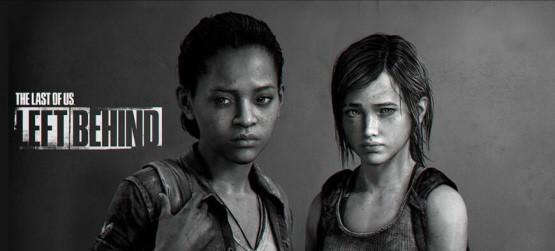
Figure 1: Riley and Ellie from The Last Of Us: Left Behind
"Over the past few years, a great number of people have turned against the inclusion of progressive politics and increased representation in the medium, leading to ongoing controversies surrounding developers whose viewpoints don’t align with gamers who believe that creators should pander to their beliefs. We’ve seen games such as Gone Home be vilified for the crime of being a lesbian romance story, while recently the game Virginia was met with a disproportionate amount of criticism due to its confrontation of racism." (Tamburo, 2017).
There aren't a lot of games out there that feature a strong female as their main character, let alone a gay female character. As The Last Of Us shows, people are still getting used to these new types of characters. This uproar became only clearer this year, when a gameplay trailer was made public, in which Ellie passionatly kisses another girl. And this made room for even more negative commentary. These discussions also appear for the inclusion of several ethnicities:
"We’ve seen the likes of Battlefield 1 being criticized for featuring a black soldier on its front cover, despite the game featuring the historically accurate, largely African American regiment the Harlem Hellfighters in one of its chapters.’’ (Tamburo, 2017).
The diversity of video games' main characters has increased and I wonder if this is a consequence of globalization. Has the digital society, in which we are constantly connected and confronted with norms, opinions and ideas from people all over the world, changed the stories of Western video games? And is that then visible in the form of new characters like Ellie?
Video games & political correctness
Political correctness is a term that is often used to define the developments in video games. In general ‘political correctness’ can be understood as "the avoidance of forms of expression or action that exclude, marginalize or insult certain racial, cultural, or other groups’’ (Oxford Dictionary). These groups are a big part of our globalized society and therefore their inclusion in games can be seen as an act of political correctness. However, in our digital society, this term is often looked down upon.
Nonetheless, in this article I will use it as a neutral term. This is because I believe that there is indeed an increase of these groups and because the term is often used in discussions about this topic. Taking another look at the controversy surrounding The Last Of Us will provide us with a better understanding as to why political correctness is used to define the developments in games. A lot of people felt that the creative director of the game, Neil Druckmann, is purposely making his characters diverse. He would be guilty of trying to be politically correct and might want to show how progressive his games are by including casts with certain ‘other’ ethnic, cultural and sexual backgrounds. In other words, by adding more diverse characters to his games.

Figure 2: Neil Druckmann Tweet
In the figure above you can see the producer himself stating that his games are inspired by his personal politics. He claims this is just what most writers (should) do. Some years ago a game like The Last Of Us: Left Behind (2014) would have never been made the way it was done now. A character like Ellie was a first for video games and it shows how far games have come. If the people who are against the developments have it their way then "eventually the entire medium will consist of one game, featuring a white guy holding a gun (…) while an anime woman with disproportionate breasts complains about feminism in their background.’’ (Tamburo, 2017). The last couple of years have seen an increase in the discussions surrounding diversity within gaming. Games seem to be changing a lot, up until the point that these changes have caused discussions about the political intentions of the games' creators. Are developers taking their new diverse and globalized Western societies into account while making their products?
Eventually the entire medium will consist of one game, featuring a white guy holding a gun (…) while an anime woman with disproportionate breasts complains about feminism in their background. (Tamburo, 2017)
From stereotypes to globalization
The diversification of the world has not always been shown in games. It took a little bit longer for this medium to have characters that mirror our globalized society. But why is the globalization and the diversification of the world only now showing in video games?
Gender
You might wonder why diversity issues are controversial in gaming since diversity has already been somewhat apparent in other means of entertainment, like television and film. One reason for the issue of female representation in games could be that gaming is still mostly seen as a masculine hobby, even though about 40% of gamers are female (Entertainment Software Association, 2015).
’’A common justification for this stereotype is that, although women might play games, they should not be considered “true” or “hard-core” gamers because they play more casually and less skilfully compared to their male counterparts.’’ (Paaßen, Morgenroth & Stratemeyer, 2016)
Games would therefore be more directed to ‘typical’ male players, presumably a young, heterosexual audience. This is shown in the small number of female video game characters and the hypersexualization of those characters that do exist. It is because of ideas like these a lot of male main characters in games are presented as strong, and females as sexy (and straight), since that would appeal to the audience (Paaßen et al., 2016).
According to several older studies, stereotypical white male characters reigned in mainstream gaming. However, nowadays, "results show that female characters appeared as often in leading parts as male characters did. They were portrayed with a sexualized emphasis on female features'' (Jansz & Martis, 2007). This study seems to indicate that female characters’ inclusion in recent games is far larger than it was in earlier games. Jansz and Martis (2007) call the development of strong female characters the ‘Lara Phenomenon’. Lara Croft (figure 6) is a name that you might recognize from the movie Tomb Raider, which is based on a video game (first realeased in 1996) that has become a big nostalgic name in the community. Although she was a strong and independent character, she nonetheless had a sexualized appearance that has become a brand for the game. Initially, it seems that this was done to boost sales, since most females were depicted heavily objectified like that in games. However, when we compare depictions like these to the new and diverse characters that populate video games nowadays, we see how stereotypical these depictions truly are. I will elaborate on that later.
Ethnicity
"Researches have shown that most leading roles in games are of white race, the heroes exclusively so.’’ (Jansz & Martis, 2007). Jansz and Martis (2007) partially back this up by arguing that the medium has a different way of how players identify with characters. In games you have the ability to change and influence the world you are playing in and therefore the character creation in games is a lot different than with other media. A study on the representations of gender, age and ethnicity in 150 games of the same year showed that other races than white were largely underrepresented. Their results showed that 80% of the leading characters in games were white. Other ethnicities filled the remaining 20% of the games (Williams, Martins, Consalvo & Ivory, 2009). A very low number indeed.
Non-white characters are also often stereotypical and for example portrayed as aggressive, as thugs or as athletes. These depictions are dangerous according to some researches, because they normalize these stereotypes. This can provoke negative social judgements that are not necessarily true (Burgess, Dill, Stermer, Burgess & Brown, 2011). The stories told about minorities in games come "(…) with underrepresentation and overreliance on stereotypes’’ (Burges et al, 2011). It is primarily a white male world and that does not seem right since ‘’we are moving toward a more global and therefore more racially diverse society’’ (Burges et al, 2011). Even though many of these games were brilliant pieces, like Grand Theft Auto: San Andreas in the figure below.
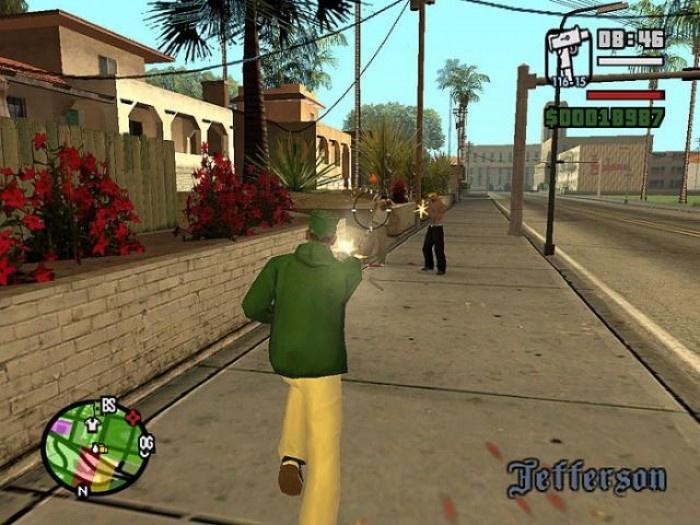
Figure 3: Stereotypical gangster character: Carl Johnson in Grand Theft Auto: San Andreas (2004)
Sexual orientation
Unfortunately, there is not a lot of research on sexual orientation in video games. However, successful games like Gone Home (2013), Life is Strange (2015), The Last Of Us (2013) and Dragon Age: Inquisition (2014) show that having a leading character who isn't heterosexual is a rising phenomenon. If we take a look at a list containing video games that feature LGBT characters, we see that those characters were also present in games in the past. However, when I looked more closely, I found that these instances almost always were comprised of subtle references or of characters being made fun of because of their sexual orientation.
In the past, this underrepresentation was because of censoring laws that were present for several mediums (Hays code). Later, homosexuality was carefully introduced in the media in ways that were not out there. While in other media this has already changed, video game writers for a long time still allowed ‘’space for an audience member to overlook or deny the homosexuality of a particular character if that’s the way they would prefer to see things’’ (Gravning, 2014). In Gravning’s article we see examples of these careful references in games, one of them being Lara Croft. The writer of the game states how she would love for Croft to be (openly) gay, but played in to expectations of gamers (and their parents) instead. This subtleness might be connected to the masculine culture I already spoke of. LGBT rights are still a sensitive topic and although this has become more widely accepted in Western countries, it is still a taboo for a lot of gamers, like we saw in the controversy surrounding The Last Of Us. But still, slowly but certainly we are seeing an increase of LGBT representation in games.
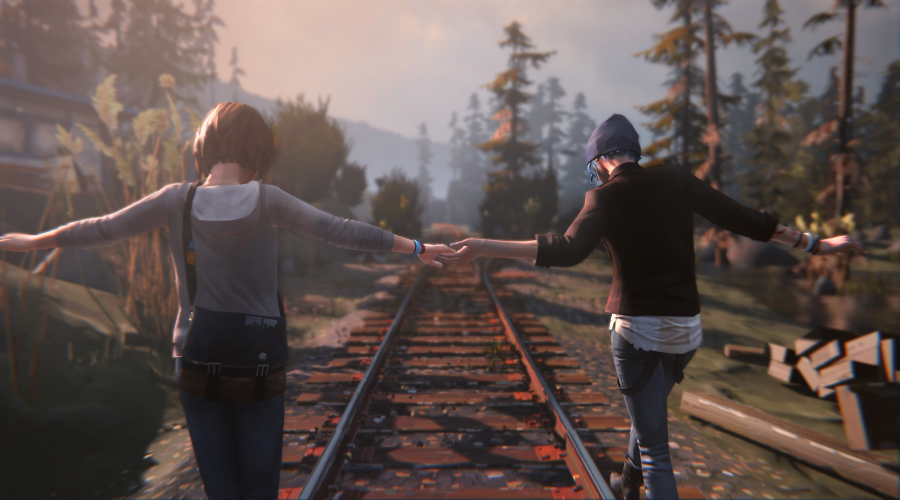
Figure 4: Max and Chloe from Life Is Strange (2015)
Connecting globalization to video games
In the sections above, I spoke of a new diverse and globalized society. Globalization is the term we hear more and more when we study our world. We are becoming increasingly connected with each other and this changes our way of living. Large parts of the globe have become interconnected within systems of political, economic, cultural flows, networks and new types of immigration. All these aspects of society have become global and they are all important in order to understand how our views on life have changed. Nowadays, we are living in a superdiverse society where all these different aspects come together (Vertovec, 2006). New economic, social, and cultural patterns have led to new labour and leisure cultures and new consumption and lifestyle patterns, of which gaming culture is just one example. We can argue that those new patterns have made marketing important. Perhaps that is also what the developers of The Last Of Us were dealing with. It could have been a marketing decision to add diverse characters to the game. This decision would then have been influenced by globalization.
Globalization is not a new phenomenon; it has always been present in our history. But what we see now is that it has accelerated a lot. It includes more people, it goes faster and it happens more often. Part of why this is the case can be explained by the new digital infrastructures of our Western society (Wang, Spotti, Juffermans, Cornips, Kroon & Blommeart, 2013). Through the internet with its Web 2.0 that sparked the culture of connectivity and the addition of smartphones, it has become fairly easy to connect to people all over the world in different ways. Because of that, we are more easily confronted with other norms, opinions and ideas from different parts of the globe (van Dijck, 2013). Society has become information-driven, with new forms of global flows and networks that exist online and offline. The internet is now the main infrastructure of globalization; it is the thing that globalizes us into who we are today (Castells, 2010). New global 'identities', that are more in the open because of the digitalization of our society, are slowly also showing up in games, in the form of new diverse characters.
But why with new diverse characters? Our identities have changed with globalization. "People define their ‘identity’ (singular) in relation to a multitude of different niches’' (Blommaert & Varis, 2015). These different niches, such as urban culture, hipster culture, LGBT culture, gaming culture etc. have become more easily accessible because of new technologies. This influences the way we organize our lives and how we think about them. There is a wide range of new cultural phenomena due to globalization, and these new phenomena also seem to be more present in video games. Different ethnicities, genders and sexual orientations appear more in mainstream games and we can likely connect these politically correct depictions to our new digitalized global life that is influencing our way of being. Our video games now match the superdiverse society we live in more, due to globalization.
In conclusion: old versus new
In the figures below, gender stereotypes can be seen when looking at the physical features of two characters whose roles are very much alike. Croft (figure 6) seems to be a hypersexualized character. In other words, she is presented in a ‘sexy’ way (big breasts, tiny waist, revealing clothing etc.). As a result, powerful women like her are seen as sex objects. If we compare this to Nadine (figure 5), from the Uncharted series, that is (co-)written by the same man who wrote The Last Of Us, we see a non-sexualized woman with a strong physique that fits her character. Moreover, it is worth mentioning that she has a South-African background that reflects in her appearance. She is not a stereotypical sexy white female at all, but rather a globalized superdiverse one.
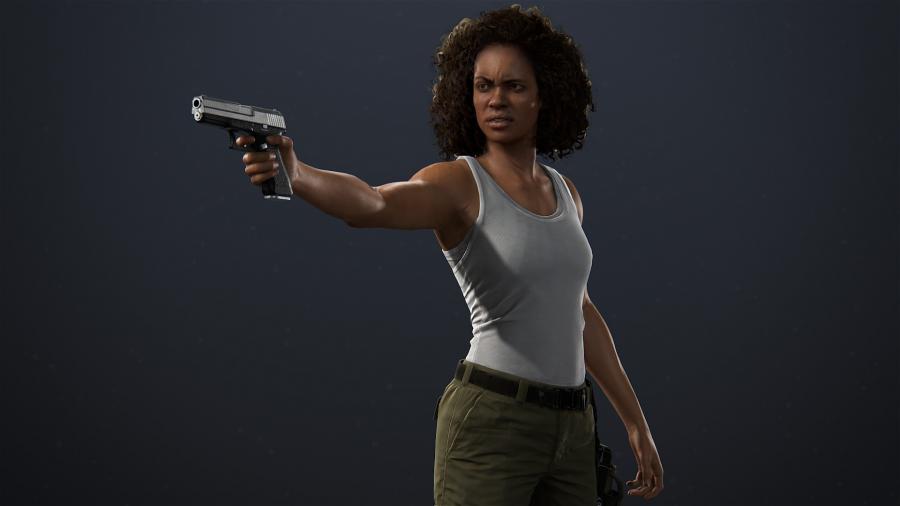
Figure 5: Nadine Ross from Uncharted: A Thief's End (2016)
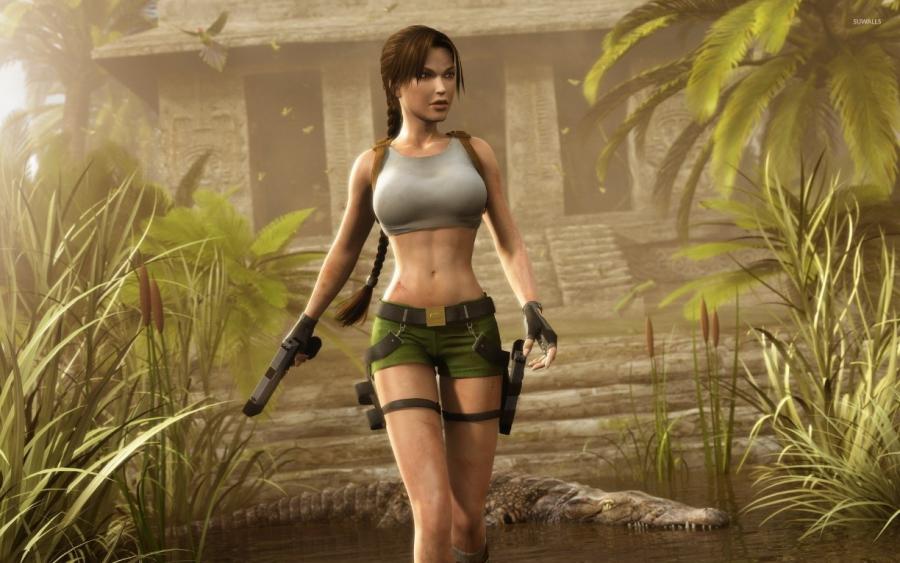
Figure 6: Lara Croft from the Tomb Raider series (1996 - present)
This is just one example of a new type of character in a Western video game that is influenced by globalization. When I took a look at a list of the most anticipated games, still to be released, or some Triple A games released in the past two years or so, we see a lot of games that have diverse characters, may this be main characters, or side characters. This means that the phenomenon is not just about some games I have happened to play over the past couple of years. Games like The Last of Us: Part ll, Death Stranding, Ghosts of Tsushima, Detroit: Become Human, Assassins's Creed Origins, Red Dead Redemption 2, Dishonored 2 and Uncharted: The Lost Legacy all have diverse characters in leading roles.
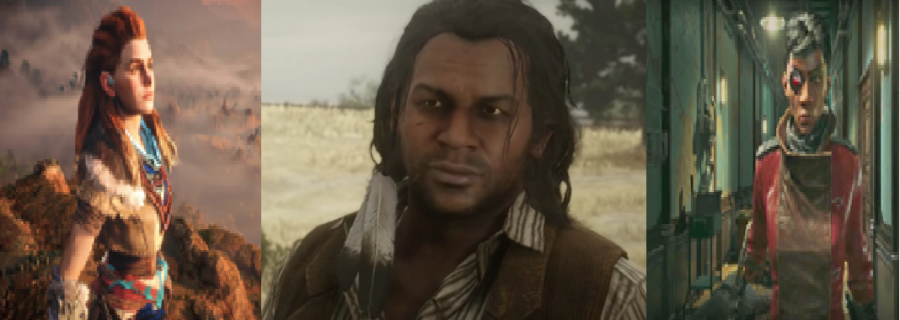
Figure 7: Big releases with diverse (side) characters: Horizon Zero Dawn, Red Dead Redemption 2, Dishonored: Death Of The Outsider
These type of games show that the stereotypical white male main character is no longer as dominant a character in the gaming community as it used to be. They also show that we are slowly turning towards a more accurate representation of our globalized society (and past) in the characters of video games. The gaming community has long been a niche culture within our society. It had its own culture, which used to be a masculine one that did not leave much room for diverse characters. Gaming is now more global and popular than ever and this might be why games are also becoming more diverse, a development that has provoked conversations about political correctness, since it includes groups of people who in the past were a neglected subject in gaming. Whether this development is 'ruining' the games, story or gameplay wise, is another discussion. But it is so that our globalized and diverse society is now indeed influencing the stories of video games.
References
Blommaert, J. & Varis, P. (2015). Enoughness, accent and light communities: Essays on contemporary identities. Tilburg Papers in Culture Studies 139.
Burgess, M., Dill, K., Sterner, P., Burgess, S., & Brown, B. (2011). Playing With Prejudice: The Prevalence and Consequences of Racial Stereotypes in Video Games. Media Psychology Volume 14, Issue 3.
Castells, M. (2010). The rise of the network society. Malden: Wiley Blackwell.
Entertainment Software Association (2015). Essential facts about the computer and video game industry.
Gravning, J. (2014), How Video Games Are Slowly, Quietly Introducing LGBT Heroes, The Atlantic.
Jansz, J. & Martis, R. (2007). The Lara Phenomenon: Powerful Female Characters in Video Games. Sex Roles Volume 56, Issue 3–4, pp 141–148.
Lalonde, R., Doan, L. & Patterson L. (2000). Political Correctness Beliefs, Threatened Identities, and Social Attitudes. Group Processes & Intergroup Relations: Volume 3, Issue 3, pp 317–336.
Oxford Dictionary, political correctness.
Paaßen, B., Morgenroth, T. & Stratemeyer, M. (2016). What is a True Gamer? The Male Gamer Stereotype and the Marginalization of Women in Video Game Culture. Sex Roles Volume 76, Issue 7–8, pp 421–435.
Tamburo, P. (2017), The Last of Us 2 and Why “Personal Politics” Belong in Video Games. Crave Entertainment.
Van Dijck, J. (2013). The culture of connectivity: A critical history of social media. New York, NY: Oxford University press.
Vertovec, S. (2006). The emergence of super-diversity in Britain. Centre of Migration, Policy and Society, Paper 25.
Wang, X., Spotti, M., Juffermans, K., Cornips, L., Kroon, S. & Blommaert, J. (2013), Globalization in the margins, Tilburg Papers in Culture Studies 73.
Williams, D., Martins, N., Consalvo, M. & Ivory, J. (2009). The virtual census: representations of gender, race and age in video games. New Media & Society Volume 11, Issue 5, pp 815–834 [DOI: 10.1177/1461444809105354]